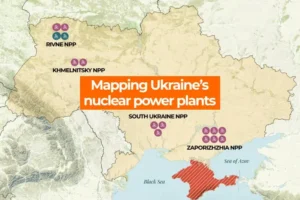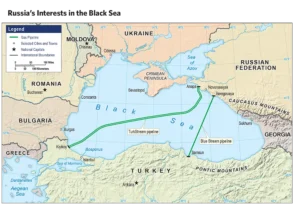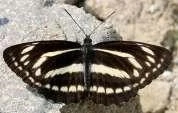GPT-4 Vision
News: GPT-4 with Vision was released by OpenAI in 2023. It has been considered OpenAI’s step forward towards making its chatbot multimodal, an AI model with a combination of image, text, and audio as inputs.
OpenAI: OpenAI is a U.S.-based artificial intelligence (AI) research organization founded in December 2015, researching artificial intelligence with the goal of developing “safe and beneficial” artificial general intelligence.
Introduction to GPT-4 Vision:
- GPT-4 Vision, often referred to as GPT-4V, expands the capabilities of the renowned GPT-4 model by enabling it to process image inputs alongside text.
- This multimodal capacity marks a significant advancement in artificial intelligence research and development.
- GPT-4 Vision as a Multimodal Chatbot:
- OpenAI positions GPT-4 Vision in an important role towards creating a multimodal chatbot, in which the AI model can seamlessly integrate image, text, and audio inputs.
- This integration paves the way for a more versatile and comprehensive conversational experience.
Visual Question Answering:
- Users can leverage GPT-4 Vision to upload images and prompt the model to analyze them, opening up possibilities for tasks such as visual question answering (VQA).
- This feature allows users to ask questions about uploaded images, enhancing the model’s utility and applicability across various domains.
- GPT-4 Vision within the Landscape of Large Multimodal Models (LMMs):
- GPT-4 Vision belongs to the category of Large Multimodal Models (LMMs).
- These models are capable of processing and generating responses based on multiple modalities such as text, images, or audio.
- Other LMMs are CogVLM, LLaVA, and Kosmos-2.
Features of GPT-4 Vision:
- Processing Visual Content: GPT-4 Vision is capable of processing various forms of visual content, encompassing photographs, screenshots, and documents.
- Object Identification and Data Analysis: This latest form of GPT-4 enables it to excel in tasks such as identifying objects within images and interpreting data presented in graphs, charts, and other visualizations.
- Text Interpretation in Images: It can also interpret both handwritten and printed text embedded within images.
-
-
- This capability represents a significant advancement in AI, bridging the gap between visual understanding and textual analysis.
-
-
Benefits of GPT-4 Vision for users:
- Academic Research Assistance: GPT-4 Vision serves as a valuable tool for researchers, simplifying tasks such as interpreting historical documents and manuscripts that typically require significant time and expertise.
- Web Development Simplification: For web developers, GPT-4 Vision streamlines the process of coding websites by allowing them to generate code directly from visual designs, even from simple sketches.
- Data Interpretation Aid: Data analysts benefit from GPT-4 Vision’s ability to unlock insights from visual data and graphics.
-
-
- By leveraging the model’s capabilities, analysts can extract valuable information from visual representations, enhancing their data interpretation workflows.
-
-
- Creative Content Generation: Content creators can utilize the combination of GPT-4 Vision and DALL-E 3 to make engaging social media posts and creative content inspired by textual prompts.
Limitations:
- Accuracy and Reliability: While GPT-4 Vision represents a significant advancement, it is not flawless and can make mistakes, necessitating the verification of content by users.
- Social Bias and Worldviews: OpenAI acknowledges that GPT-4 Vision may perpetuate social biases and worldviews, highlighting the importance of critical assessment of its outputs.
- Avoidance of Identifying Specific Individuals: GPT-4 Vision has been trained to refrain from identifying specific individuals in images, a behavior known as ‘refusal’ by design.
- Limitations in Precise Analysis: OpenAI advises against using GPT-4 Vision for tasks requiring precise scientific, medical, or sensitive content analysis due to its limitations and inconsistencies.
UPSC Current Affairs: Curative Petition, UN Entry & UPSC Syllabus | GS Paper 2
Zaporizhzhia Nuclear Reactor
News: The Zaporizhzhia nuclear power station, controlled by Russian forces, was reportedly struck recently by Ukraine.

Zaporizhzhia Nuclear Reactor:
- The Zaporizhzhia plant is located in southern Ukraine on the banks of the Dnipro or Dnieper River (which drains into the Black Sea).
- Zaporizhzhia Nuclear Reactor is the largest in Europe.
- The six reactors at Zaporizhzhia have the capacity to produce 5,700 MW of electricity.
- It is currently under the control of the Russian forces.
- Zaporizhzhia accounts for nearly half of the total electricity generated by Ukraine’s nuclear power plants and one-fifth (20%) of its annual electricity production.
Black Sea:
- Black Sea lies between Eastern Europe and Western Asia.

- There are six countries with coastlines on the Black Sea (clockwise), Ukraine, Russia, Georgia, Turkey, Bulgaria, and Romania.
- Black Sea is bounded by the Eastern European Plain to the north, the Balkans to the west, the Caucasus Mountains to the east, and the Anatolian Peninsula to the south.
- It receives many rivers, including the Danube, Dniester, Bug, Dnieper, Kuban, Kızıl, and Sakarya.
- The Black Sea is the largest inland body of water and is also the largest meromictic basin (movement of water between the lower and upper layers of the Sea is rare).
- The Black Sea is also connected to the Sea of Azov by the Strait of Kerch.
Neptis Philyra
News: A rare butterfly species named Neptis philyra has been discovered for the first time in India in Tale Valley Wildlife Sanctuary of Arunachal Pradesh.
Neptis Philyra:

- It is commonly known as long-streak sailor.
- Neptis philyra butterfly has serrated wings with rich brownish-black on the upper side and yellow brown on the underside.
- The butterfly’s distinct markings include a white cell streak forming a “hockey stick” pattern on the forewing.
- The species, which is part of the Nymphalidae family, is known to prefer habitats such as evergreen forests, riverine vegetation, and rocky streams.
- Before this discovery, Neptis philyra butterfly species was known to be found in east Asia, including eastern Siberia, Korea, Japan, central and southwest China.
Tale Valley Wildlife Sanctuary:
- Location: Talley Valley Wildlife Sanctuary is a wildlife sanctuary in Arunachal Pradesh, India.
- Rivers like Pange, Sipu, Karing and Subansiri flow through this sanctuary.
- Flora: It has subtropical and alpine forests like silver fir trees, ferns, orchids, bamboo, and rhododendron.
-
- Pleioblastus simone, one of its kind of bamboo, can be found only in Talley Valley.
-
- Fauna: Clouded leopard, Himalayan squirrel, Himalayan Black Bear.
